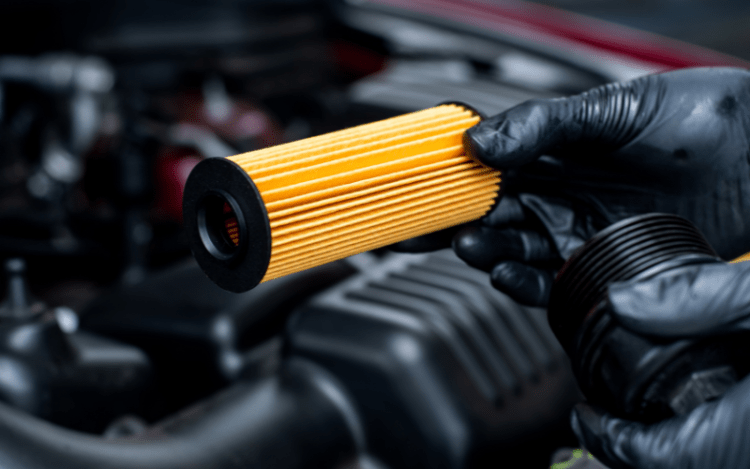Nobody enjoys having to pay for auto repairs. Sometimes it's tempting to put off getting your oil changed because you're thinking, "Oh, my ride's still running fine." Regular oil changes, however, are one of those things you simply cannot fumble with, believe me, family. Oil is the lifeblood that keeps your car's engine running, which is like its heart. If you ignore those adjustments, you're essentially inviting a costly malfunction or worse. Here's why it's imperative that you maintain your oil game.
Keeps Your Engine From Turning Into a Hot Mess
The purpose of oil is to keep all of your engine's moving parts lubricated so they don't grind against one another like a poor dance. However, that oil becomes contaminated and degrades over time. At that point, it is no longer functioning properly, and your engine begins to overheat or wear out more quickly than a pair of cheap sneakers. Depending on your vehicle, routine oil changes—typically every 3,000 to 5,000 miles—keep everything cool and running smoothly. No one wants to be that person stranded on the side of the road with smoke pouring out of the hood.
Saves You Big Bucks in the Long Run
Look, I get it—spending $30 or $50 every few months feels like a drag. But think about this: replacing an engine can cost you thousands. I learned this the hard way back in college. I had this beat-up old Honda, and I thought I was slick skipping oil changes to save a few bucks for pizza. Next thing I know, the engine seized up, and I was stuck bumming rides from friends for weeks while I scraped together cash to fix it. Don’t be like me, y’all. A little money now beats a massive repair bill later.
Boosts Gas Mileage (and Who Doesn’t Love That?)
Dirty oil makes your engine work harder, and when it’s working harder, it’s guzzling more gas. With gas prices these days, that’s a hard pass. Fresh oil keeps everything efficient, so you’re not burning through fuel like it’s going out of style. The U.S. Department of Energy even says regular maintenance like oil changes can improve your mileage by up to 4%. That might not sound like much, but it adds up when you’re driving across town every day.
Keeps Your Warranty Happy
If your car’s still under warranty, you better believe skipping oil changes could void it. Dealerships and manufacturers aren’t playing around—they want proof you’ve been keeping up with basic upkeep. No oil change receipts? You might be out of luck when something goes wrong, and that’s a headache you don’t need. Stick to the schedule, and you’ll keep that safety net intact.
How Often Should You Do It?

Image credit: Gentleman's Pursuits/Canva
Most cars need an oil change every 3,000 to 5,000 miles, but check your owner’s manual to be sure—some newer models can stretch it to 7,500 with synthetic oil. Don’t just guess, tho. Mileage matters more than time, so if you’re racking up the miles quick, don’t wait six months to get it done.
How to Do an Oil Change Yourself
Alright, so you’re ready to roll up your sleeves and tackle an oil change like a DIY champ? Respect! It’s not as hard as it sounds, and you’ll save some cash while feeling like a total boss. I’ve done this a bunch of times in my driveway, so I’ll walk you through it step-by-step. Here’s how to swap out that old, nasty oil for some fresh stuff—no fancy mechanic skills needed.
What You’ll Need
Before you start, grab these basics:
- New oil (check your car’s manual for the right type and how much—usually 4-6 quarts).
- A new oil filter (make sure it fits your car).
- A wrench to loosen the drain plug.
- An oil filter wrench (or a strong grip if you’re feeling lucky).
- A drain pan to catch the old oil.
- A funnel (unless you’re cool with oil all over the place).
- A jack and jack stands (or ramps) to lift your car.
- Gloves and some rags—trust me, it gets messy.
- A big bottle or jug to store the old oil for recycling.
Step 1: Get Your Car Up
Park on a flat spot—like your driveway—and pop the hood. Use a jack to lift the front of your car, then slide jack stands under it for safety. Don’t skip this part; you don’t want your ride crashing down on you. If you’ve got ramps, just drive up onto those instead. Easy peasy.
Step 2: Drain the Old Oil
Crawl under the car and find the oil drain plug—it’s usually a bolt on the bottom of the engine’s oil pan. Stick your drain pan underneath, then grab your wrench and loosen that bad boy (turn it counterclockwise). Heads-up: once it’s loose, oil’s gonna gush out fast, so don’t lose the plug in the mess! Let it drain for about 10 minutes till it’s just dripping. While you’re down there, wipe off the plug with a rag—it’s got a washer that seals it, so don’t lose that either.
Step 3: Swap the Oil Filter

Image credit: Gentleman's Pursuits/Canva
Now find the oil filter—it’s a little cylinder thing near the engine. Put your drain pan under it ‘cause it’ll leak too. Use your oil filter wrench (or brute strength) to twist it off counterclockwise. It might fight you a bit, but keep at it. Before you slap on the new one, rub a little fresh oil on its rubber gasket—that helps it seal tight. Screw the new filter on by hand till it’s snug, then give it a quarter-turn more with the wrench. Don’t overdo it, or you’ll be cursing next time.
Step 4: Plug It Back Up
Once the old oil’s done draining, pop the drain plug back in and tighten it with your wrench. Don’t go Hulk on it—just firm enough so it won’t leak. Double-check it’s secure, then lower your car back down off the jack stands or ramps.
Step 5: Add Fresh Oil

Image credit: Gentleman's Pursuits/Canva
Under the hood, find the oil cap (it’s usually got an oil can symbol on it). Twist it off, stick your funnel in, and pour in the new oil. Check your manual for how much—don’t overfill it! I messed this up once and poured in an extra quart, and my car was smoking like a BBQ for a week. After you’re done, screw the cap back on tight.
Step 6: Check Your Work
Start the engine and let it run for a minute. Keep an eye out for leaks under the car. Then turn it off, wait a sec, and check the dipstick. Pull it out, wipe it, stick it back in, and pull it again—oil should be between the “low” and “full” marks. If it’s low, add a bit more and check again.
Step 7: Clean Up Like a Pro
Pour the old oil into a sealed jug—don’t just dump it in the trash or down the drain, that’s a jerk move (and illegal). Take it to an auto parts store or recycling spot—they’ll handle it for free. Wipe down your tools, toss the gloves, and you’re golden.
Pro Tip From Experience
The first time I did this, I forgot to tighten the drain plug all the way. Oil was dripping everywhere, and I had to redo it while cursing my dumb self. Double-check everything, fam—it’ll save you a headache.
There you go! You just changed your oil like a legend. Takes about 30-45 minutes once you get the hang of it, and you’ll be flexing your skills next time someone asks how you keep your ride so smooth.
Wrap-Up: Don’t Sleep on Oil Changes
At the end of the day, regular oil changes are a no-brainer. They keep your engine alive, save you money, and make sure you’re not stuck pushing your car to the shop. It’s not glamorous, but it’s one of those adulting must-dos that pays off big time. So next time you’re tempted to put it off, just remember: a little TLC now keeps your whip rolling strong for the long haul.





